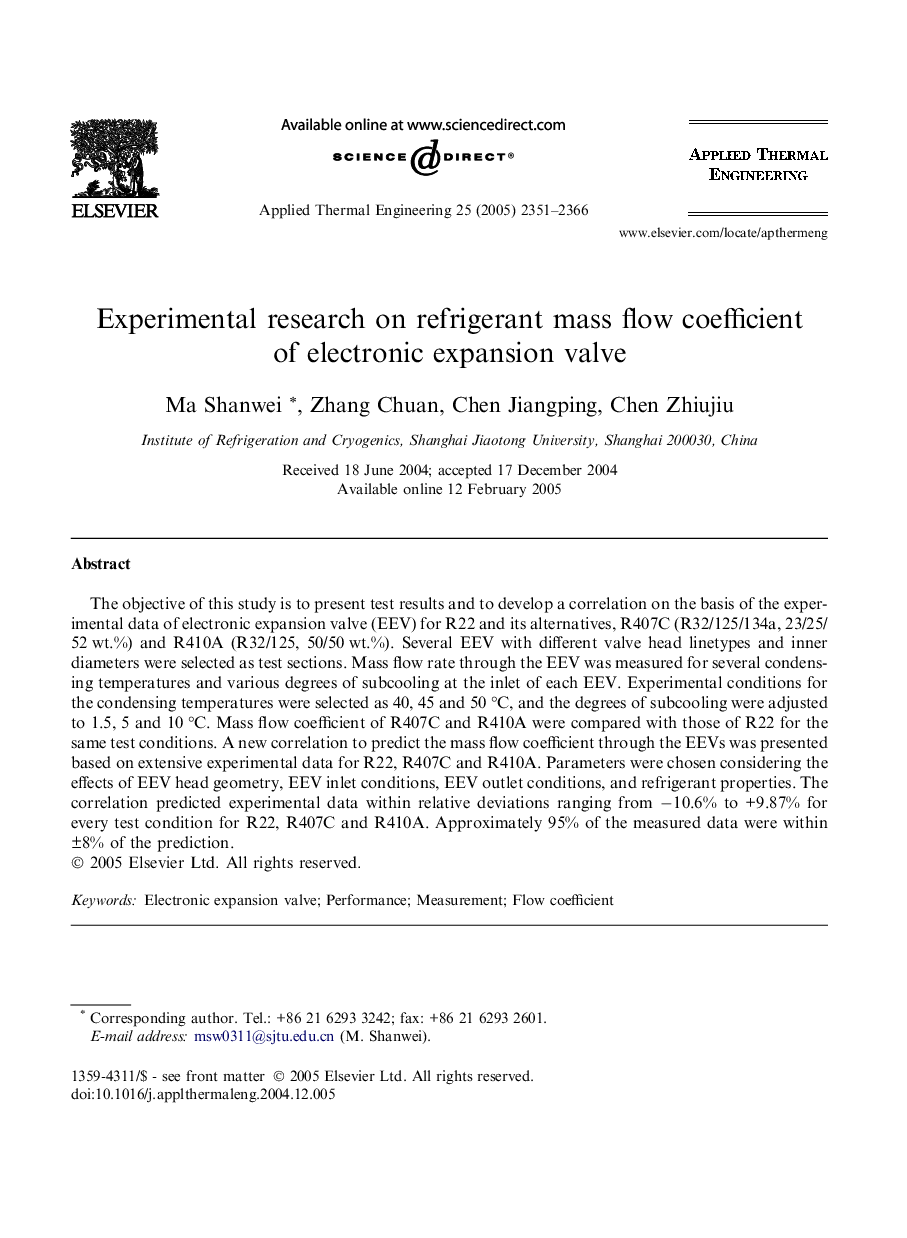| Article ID | Journal | Published Year | Pages | File Type |
|---|---|---|---|---|
| 649939 | Applied Thermal Engineering | 2005 | 16 Pages |
The objective of this study is to present test results and to develop a correlation on the basis of the experimental data of electronic expansion valve (EEV) for R22 and its alternatives, R407C (R32/125/134a, 23/25/52 wt.%) and R410A (R32/125, 50/50 wt.%). Several EEV with different valve head linetypes and inner diameters were selected as test sections. Mass flow rate through the EEV was measured for several condensing temperatures and various degrees of subcooling at the inlet of each EEV. Experimental conditions for the condensing temperatures were selected as 40, 45 and 50 °C, and the degrees of subcooling were adjusted to 1.5, 5 and 10 °C. Mass flow coefficient of R407C and R410A were compared with those of R22 for the same test conditions. A new correlation to predict the mass flow coefficient through the EEVs was presented based on extensive experimental data for R22, R407C and R410A. Parameters were chosen considering the effects of EEV head geometry, EEV inlet conditions, EEV outlet conditions, and refrigerant properties. The correlation predicted experimental data within relative deviations ranging from −10.6% to +9.87% for every test condition for R22, R407C and R410A. Approximately 95% of the measured data were within ±8% of the prediction.
